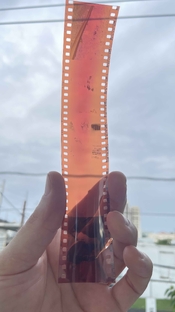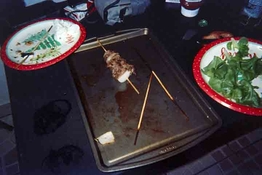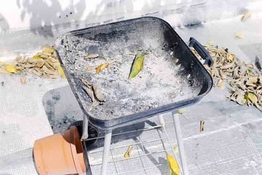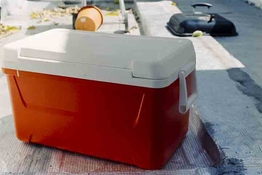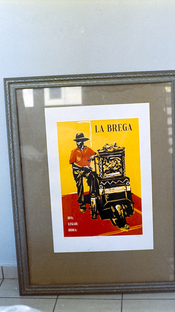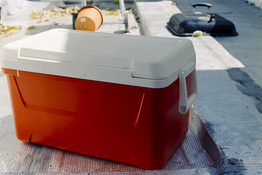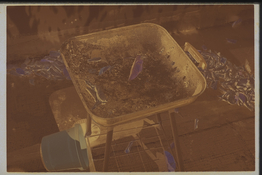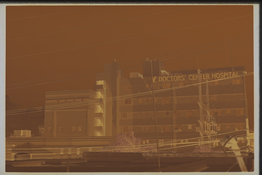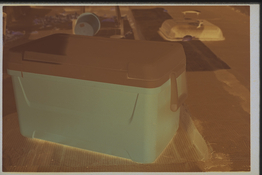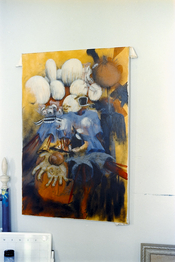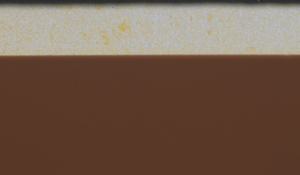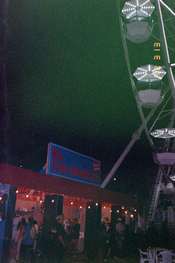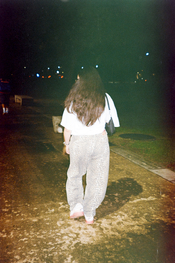originalwinslow
Member
Greetings all.From what I've gathered over the years, EDTA bleaches work but tend to be very slow compared to DTPA. A small excess of EDTA might fix that issue, I may try it sometime.
Ferricyanide bleaches work very well, but you MUST buffer them to avoid pH related issues with red stains, something that destroyed a large amount of film for me 30+ years ago. Half a gram of borax per 500 mL of ferricyanide bleach works wonders, I use it for C41, ECN-2, and E6. Only real drawback to it is that strong acids contaminating it WILL release hydrogen cyanide, and incomplete washiing WILL precipitate Prussian Blue (ferrocyanide) in both film and fixer.
I have recently started my homebrew journey and began mixing my own Ferricyanide bleach in the Kodak "alternative bleach" mix of 40g Potassium Ferricyanide to 25g Sodium Bromide and fixing with Formulary TF-5 fixer. Developing ECN-2 with this combination gives me no issues. However, my first c-41 dev left SOME frames with mild stains visible in the low-exposure parts of the negative that showed as green upon scanning. I forged ahead and developed a second batch 4 days later which unfortunately sustained much worse red/purple stains clearly visible on the negatives. The green in the positive conversions was more present, but again mostly visible in underexposed portions of the negative. I re-bleached and fixed but no perceptible change on the negative was visible. I am working to find the root cause of this staining, which may have been from incomplete washing or an insufficiently acidic stop bath. I should note that I ran 20+ rolls through 2L of these bleach and fix mixes and the images seem to fully clear.
RPC as well as the "photo techniques" document recommend 80g Potassium Ferricyanide to 20g Potassium Bromide for c-41 Ferricyanide bleach. The "photo techniques" document states that the pH of this stronger mix should be 5.7 aka more acidic than the 6.5 for the 40/25 ECN-2 ferri bleach that I used. RPC notes a bleach time of 2.5 minutes, probably due to this lower pH creating a stronger bleach. He also says he dumps this bleach after 2 uses which seems wasteful as my "weaker" mix was apparently able to fully clear 20+ rolls (albeit with 2L of working solution). FPP uses ferri bleach in their kits and rates it for 20 rolls.
Considering these factors; what caused this stain? Reaction of the bleach with trace amounts of developer creating hydrogen cyanide? Reaction of the fixer to trace amounts of bleach creating prussian blue? I have been rinsing 3-4 times between each step. Vinegar stop bath (125ml 5% to 875 water) too weak? I did see more than usual blue in the water after washing out the stop bath. It seemed reminiscent of prussian blue but can find no visual aides that describe what it would look like on negatives and in any case that would occur after contact with the bleach/fix. It also looked to me like the deep blue created when pure CD-4 mixes with water...but that doesn't make sense either.
I suppose my first step is to mix all new chems and rinse more thoroughly and see if the problem persists. Psfred threw another wrench into this by mentioning pH of bleach can cause staining as well. I could buffer with borax to extend the lifespan, but what is my ideal pH range for the bleach? 6.5 +- .5 for the 40/25 mix and 5.7 +-.5 for the 80/20 mix? My 2L 40/25 solution had dropped to 5.8 after 20+ rolls....but I got staining from the jump so I dont think that was the cause. How much of pH deviation would cause staining? Again, I used this exact same process for ECN-2 with no issues.
Sorry for the long post. Any assistance is appreciated. I live in Puerto Rico and need to find a way to transition away from using 1L powder kits that are cost ineffecitve and often out of stock. Liquid chems will not ship here. I plan on mixing up some blix as per the OP as soon as I can source the EDTA/PDTA.









